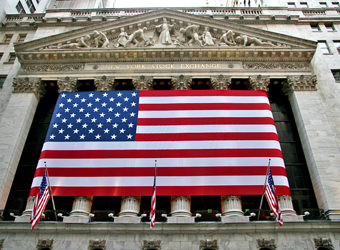Stocks overcame early weakness and the dollar and U.S. Treasury yields rallied on Friday after data showed U.S. wages rose in December even as hiring slowed, setting the economy up for further interest rate increases from the Federal Reserve this year.
The stronger greenback weighed on dollar-denominated commodity prices, but oil rose slightly on increased buying ahead of the weekend.
Nonfarm payrolls rose less than expected in December, the Labor Department said, but a rebound in wages highlighted sustained labor market momentum that points to stronger growth and could drive the Fed to consider raising rates as early as the first quarter.
“There’s still improvement to be made, especially with the labor force participation rate being low, but conditions seem to be close to what the Fed might be happy with,” said Brian Jacobsen, chief portfolio strategist at Wells Fargo Funds Management in Menomonee Falls, Wisconsin.
MSCI’s world index .MIWD00000PUS, which tracks shares in 46 countries, erased most of its earlier losses to trade little changed. U.S. stocks advanced and the Dow Jones Industrial Average .DJI came within one point of hitting 20,000 for the first time ever.
U.S. equities have risen sharply since Donald Trump won the U.S. election in November and while Friday’s gains suggested the rally is not yet over, some investors have grown cautious.
“The market’s advance is understandable because of the economic stimulus optimism associated with a new Trump presidency,” said CFRA chief investment strategist Sam Stovall.
“But parabolic market advances traditionally experience digestion of these gains, and I don’t think this time will be any different.”
The Dow Jones Industrial Average .DJI rose 64.51 points, or 0.32 percent, to close at 19,963.8, the S&P 500 .SPX gained 7.98 points, or 0.351697 percent, to finish at 2,276.98 and the Nasdaq Composite .IXIC added 33.12 points, or 0.6 percent, to end at 5,521.06.
Apple (AAPL.O) shares climbed 1.1 percent after Canada’s Competition Bureau did not find sufficient evidence the iPhone maker had engaged in anti-competitive conduct, closing a two-year investigation into the company.
European shares rallied from the day’s lows after the U.S. jobs data. Europe’s broad FTSEurofirst 300 index .FTEU3 finished little changed at 1,444.97.
The dollar rose, boosted by the solid U.S. jobs report, after tumbling the day before on mixed U.S. economic data and apparent action by Chinese authorities to shore up the yuan.
The dollar index .DXY, which measures the greenback against six major currencies, was up 0.66 percent to 102.19.
In bond markets, U.S. Treasury debt yields rose across the board. Yields on benchmark U.S. 10-year notes rose from a five-week trough, while those on 30-year bonds recovered from a seven-week low following the jobs data.
“We definitely think rates are going to continue to climb from here,” said Justin Tabellione, senior fixed income portfolio manager at Legal & General Investment Management America in Chicago.
“I would not be surprised to see 10-year yields closer to 3 percent some time this year as soon as the summer, once we get clarity on what’s going to happen on the fiscal stimulus plan.”
In late trading, the U.S. 10-year note US10YT=RR was down 13/32 in price, yielding 2.419 percent, compared with 2.368 percent late on Thursday.
Meanwhile, the stronger dollar weighed on dollar-denominated commodities.
Gold prices slipped from the previous day’s one-month high as the dollar strengthened. Spot gold XAU= fell 0.68 percent to $1,172.33 an ounce.
Palladium however remained on track for its largest weekly gain since March on record high U.S. car sales.
Oil rose slightly, ending the week higher, but gains were limited by the stronger dollar and lingering doubts about whether OPEC producers would stick to a deal to cut crude output.
Brent crude LCOc1 settled up 21 cents, or 0.37 percent, at $57.10 a barrel, and U.S. crude CLc1 settled up 23 cents, or 0.43 percent, at $53.99.
Source: Reuters



